Future of TT Cranks and Chainrings?
I started cycling in earnest about twenty years ago. During that time period, we’ve seen incredible advancements in cycling technology. The tools required to run a bike shop today look almost nothing like those of yesteryear, especially when we look at items like hydraulic brakes, electronic shifting, and the litany of new ‘standards’ for bottom brackets, headsets, forks, axles, and seat posts.
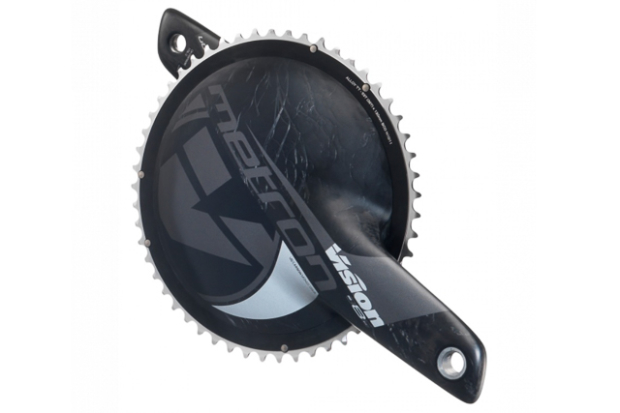
When I was starting to get serious about triathlon, I was enamored with the tech. I received much of my education from a website called Slowtwitch.com, and went on a quest of optimizing my equipment, riding position, and training methods. For some unknown reason, aerodynamic cranks and chainrings always caught my interest. Are they actually faster? Why don’t more companies make them? It always just seemed obvious to fill in the middle of the chainring; even if it didn’t actually do anything, it surely couldn’t hurt (plus it looks extra cool).
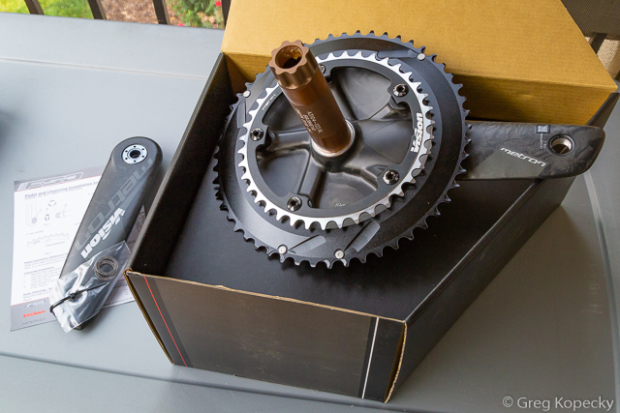
TT cranks and rings always seemed to come and go. A company would try making them, fail to sell enough to make any real money, and discontinue the product. A few years would go by, and they’d try again. I also think that much of the problem had to do with the industry’s penchant for ever-evolving standards. We seem unable to decide on how many chainrings we want, how many teeth they ought to have, what shape the ring and teeth ought to be – and of course, what size hole should be in the frame (and its width, symmetry, bearing type, and so on). It’s nearly impossible for niche products to survive in this rapidly-changing environment.
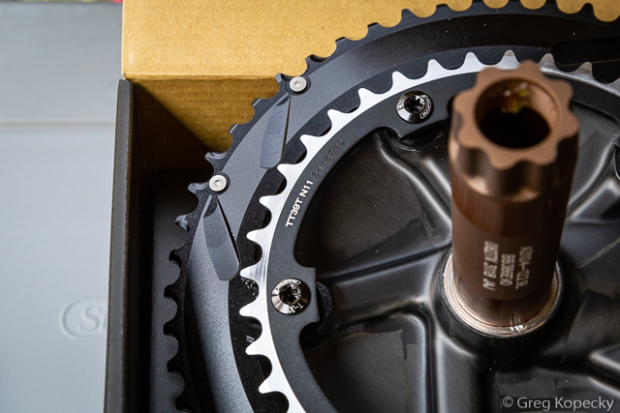
The most consistent player in this game has been Vision (formerly called Vision Tech; the aero-focused sub-brand of FSA). In fact, my very first aero chainring was made by FSA. It was aluminum, and made in 135mm bolt circle diameter (BCD) to fit my Campagnolo cranks. Don’t get me wrong – it looked super sharp – but the shifting quality left much to be desired. I tuned, fiddled, and dialed for hours, but ended up retreating back to my old standard 53- tooth Campagnolo chainring.
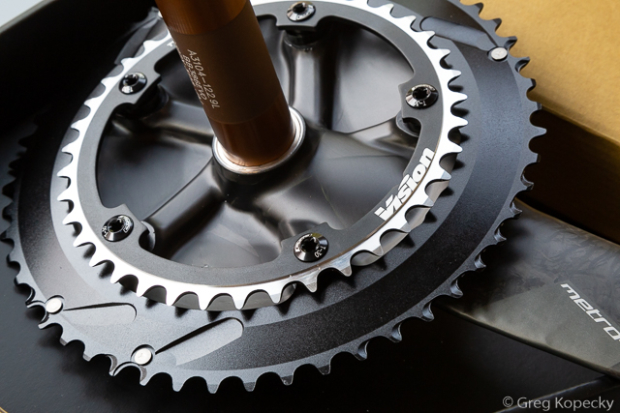
Since then, Vision has refined their offerings. The shift quality of the crank we reviewed in 2013 was lightyears better than my original FSA chainring. It set a new bar for what I expected of Vision / FSA, and stayed on my bike for quite some time.
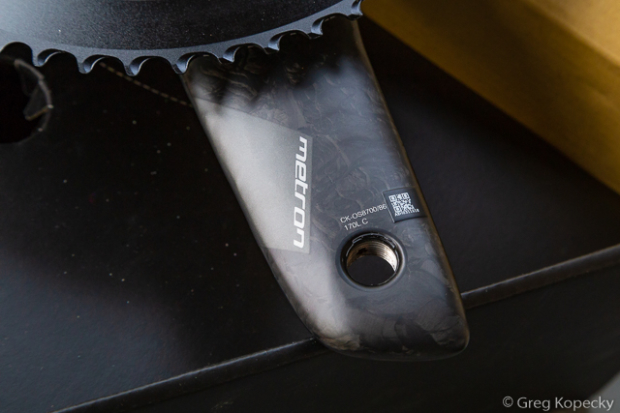
We recently got our hands on the latest aerodynamic crank from Vision, which still sells under the Metron name (this is the crank you see featured in the photos of this article). Our older version relied on a standard 130mm BCD, combined with a hybrid aluminum/carbon outer chainring. The new unit maintains the 130mm BCD, but threads the bolts into the backside – leaving a smooth face for the drive side.
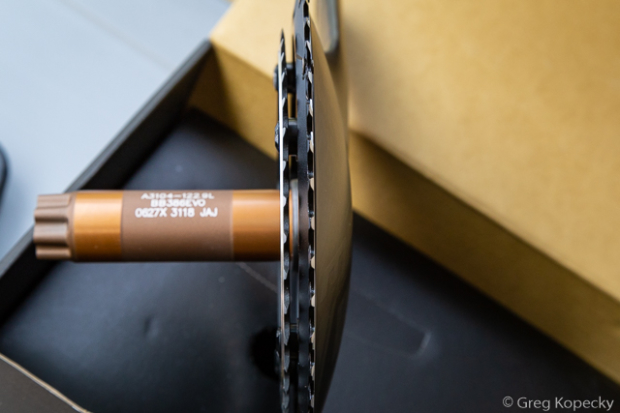
Vision uses a BB386 EVO spindle – a standard that I’ll admit to have assumed was dead-on-introduction. Another crank spindle diameter/length? However, this one has managed to stick around and gain adoption.
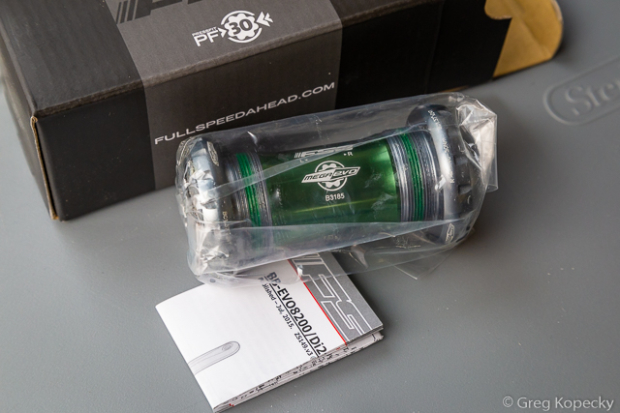
BB386 EVO has a wide range of compatibility, including my frame with a standard threaded bottom bracket shell. Vision sent us their appropriate BB, along with its special installation wrench.
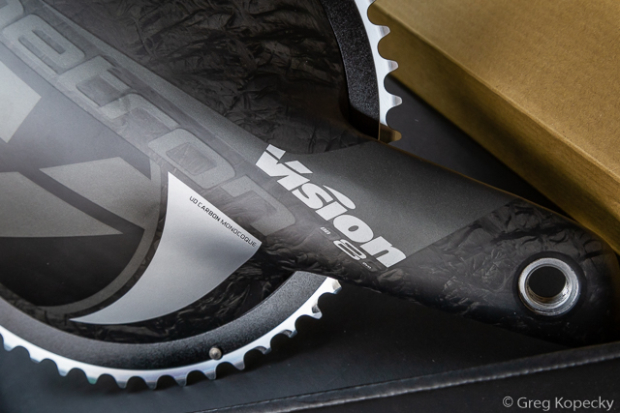
Chainring sizes are perhaps the largest sticking point for TT-style cranks and rings. It’s a big part of why they have struggled to catch on en masse. Originally, you could only find them in huge ring sizes – 54, 55, or 56 teeth for the large ring, and 42 or 44 for the small ring. Eventually manufacturers got with the times and started offering the then-standard 53/39 size. Happily, Vision offers this size for the Metron – and this is how we spec’ced our test crank.
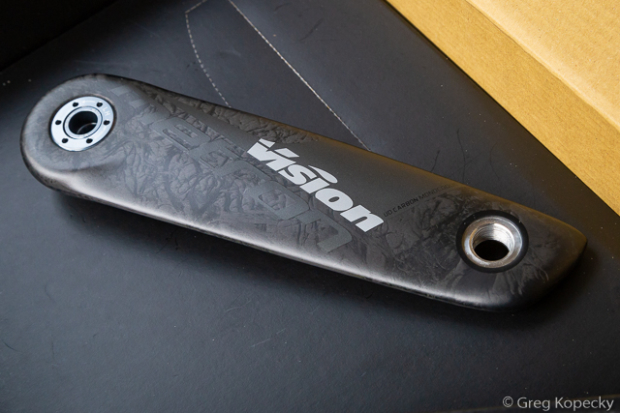
However, even the 53/39 size has fallen out of favor. I’d argue that the 52/36 mid-compact is now the standard for two-chainring systems. And of course, we also have single chainring systems to worry about, plus oval rings (which Rotor offers), power meter integration, and so on. There are a ton of SKUs for a retail store to manage, and a ton of different options and possibilities for the consumer to attempt to understand (keeping in mind that not everyone is a technical, Slowtwitch-reading cyclist or triathlete). These are the realities of the marketplace in which these products and companies must survive.
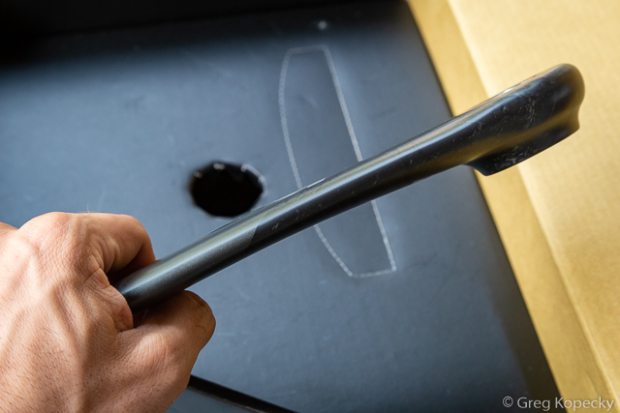
What about non-drive crankarms? Is there any aero story here? Some TT cranks make the left-side crank arm a little bit thinner, and it appears that this is what Vision has done. Others, such as SRAM, or Shimano’s long-discontinued TT offering only rely on an aero ring affixed to an otherwise standard crank.
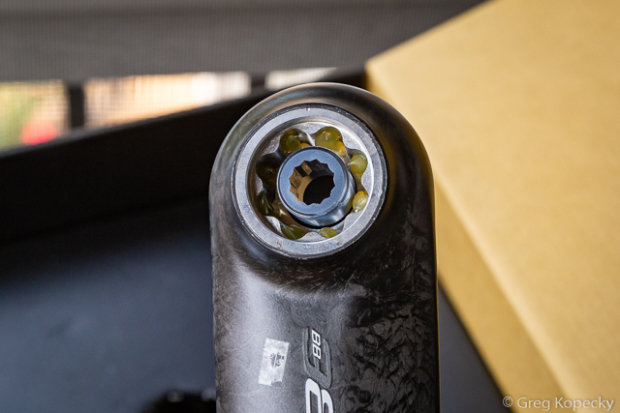
The big question is – are these cranks actually faster? We have always struggled to get our hands on any data to help answer this question. Vision provided us with data from their own internal CFD analysis, to provide at least some answers.
In order to speed up calculations, the data gathering was done only with the bottom portion of a frame, the cranks, and bottom bracket. It did not include pedals, wheels, a rider, etc.
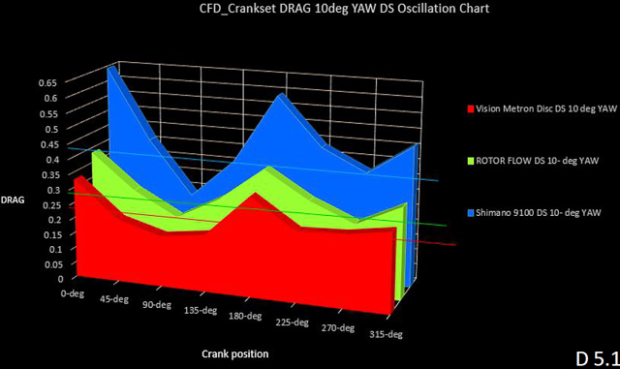
CFD Protocol:
-Air Velocity: 11.176m/s (25Mph/40.23kph)
-YAW simulated: 0 deg, 10 deg on both drive and non-drive side.
-Crank rotation: 80 revs per minute.
-Data collected from clocked positions of: 0, 45, 90, 135, 180, 225, 270, 315deg
-Crank lengths: 172.5mm
-Chain rings: 53/39t ring combo. ROTOR Flow cranks were simulated with the ROTOR Q rings (Ovalized) and set up to mimic an orientation that would be common to improve pedal stroke. Shimano and Metron cranks were modeled with round rings as is offered with these cranksets. No chain included on any models.
-Chain line -manufacturer spec: 43.5mm for Shimano 9100 and ROTOR flow, 44mm for Vision Metron.
-Q factor-manufacturer spec: 148mm ROTOR Flow, 147mm Vision Metron, 146mm Shimano 9100.
-Cranks simulated only with isolated frame geometry and Bottom Bracket. This was to compress the computational domain (area of calculation) and reduce computational time for a faster result.
-Pedal spindle threading was filled in on all cranksets.
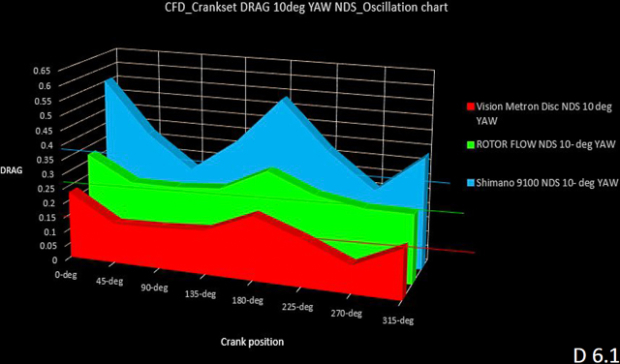
Are these drag improvements enough to mean something in the real world – or to be outside of the margin of error in a high-precision wind tunnel? Those questions are above my pay grade, but I’m glad to see an attempt to provide something of substance.
Will we see aero / TT / triathlon-style cranks and rings survive into the future? My educated guess is that they’ll likely continue as a small niche product, just like we’ve seen in the past twenty years. There are simply too many drivetrain options and configurations for TT cranks to see massive growth – chainring shapes, tooth shapes, tooth counts, number of chainrings, crank lengths, power meter integration, and other factors. In other words, it does not make business sense for a company to provide an aero / TT-style option that would fulfill ALL of these potential needs.
At least for me, TT cranks will always have the undeniable cool factor, and will always hold a place in my bike geek heart.


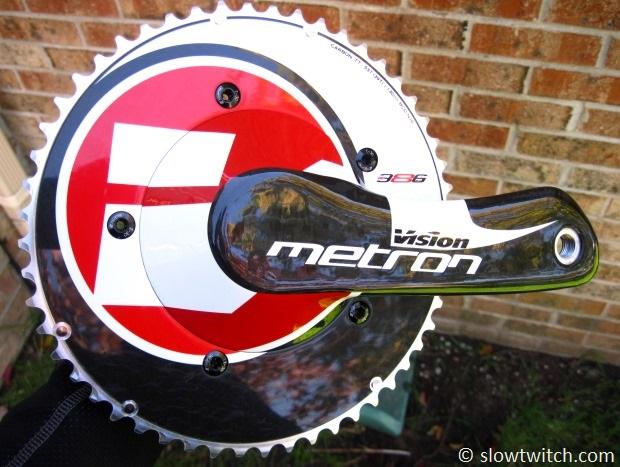
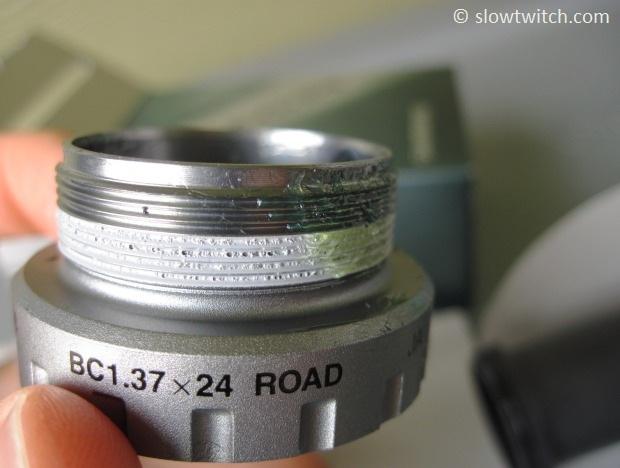
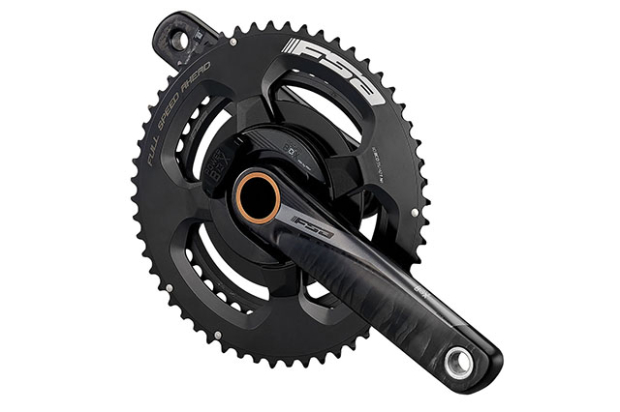
Start the discussion at forum.slowtwitch.com